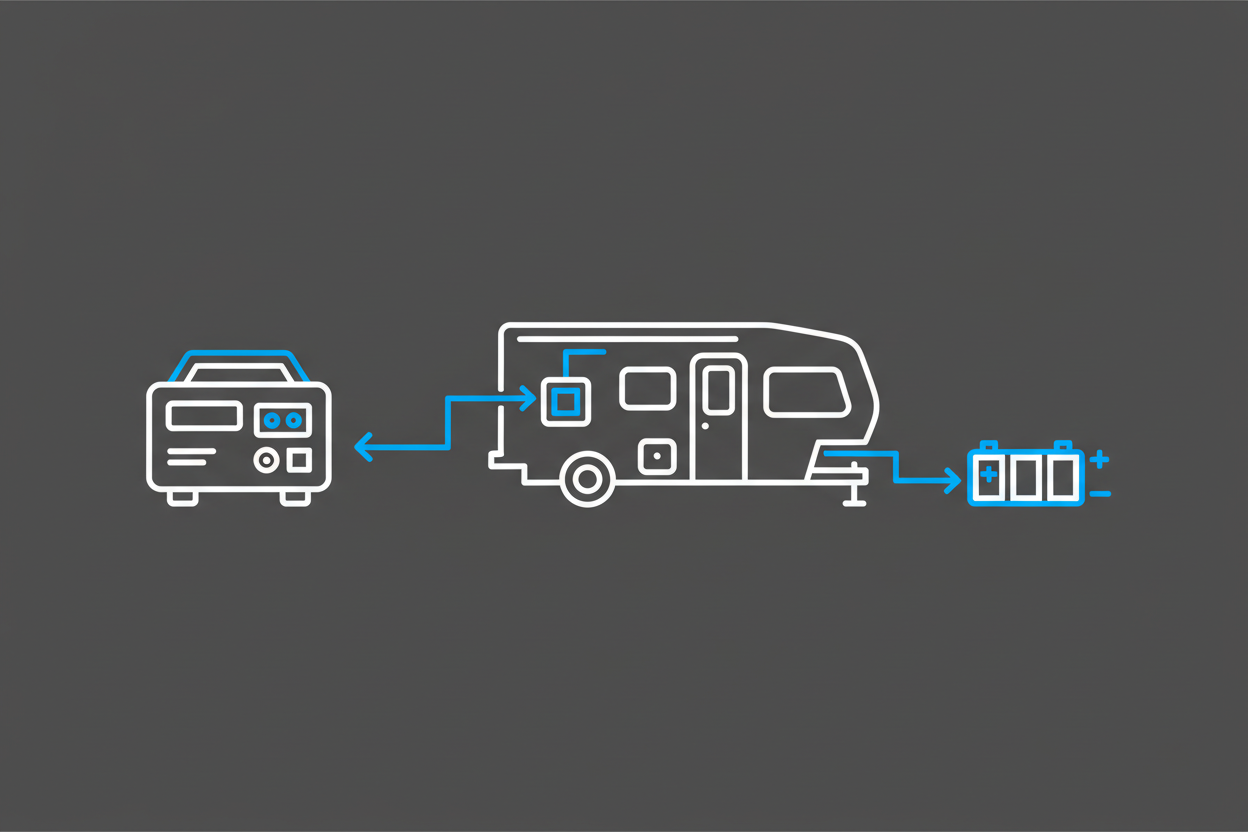How to Charge RV Batteries With a Generator
A generator does more than power AC outlets. It also recharges your RV house batteries through the onboard converter. Efficient charging keeps lights, fans, and devices running when you camp off-grid.

How RV Battery Charging Works
When the generator is running, 120V AC feeds your RV power panel and converter. The converter turns AC into 12V DC and sends it to the battery bank.
Charging usually happens in stages. Batteries accept power quickly at first, then slow as they approach full capacity.
What Affects Charging Speed
- Converter output: Higher-amp converters charge faster.
- Battery type: Lithium charges quicker than lead-acid.
- Battery capacity: Larger banks need more time.
- Generator headroom: Extra wattage helps maintain stable charging.
Best Practices for Efficient Charging
- Charge during generator-allowed hours, then switch to batteries at night.
- Turn off high-draw appliances while charging for faster recovery.
- Keep battery terminals clean and connections tight.
- Monitor converter temperature in hot climates.
Choosing Generator Size for Battery Charging
Battery charging alone is a moderate load. Most RVs can charge effectively with a 2000–2400W inverter generator. If you run an air conditioner, size your generator for AC first.
Using a Smart External Charger
Some RV converters charge slowly, especially older models. A portable smart charger can speed recovery. Plug it into the generator and connect directly to your battery bank.
Common Charging Scenarios
For boondocking, many RV owners run the generator for one to three hours daily. This restores battery capacity for lighting, electronics, and overnight loads.
Conclusion
Charging RV batteries with a generator is simple when loads are managed. Pair generator time with battery time for the most efficient off-grid routine.
